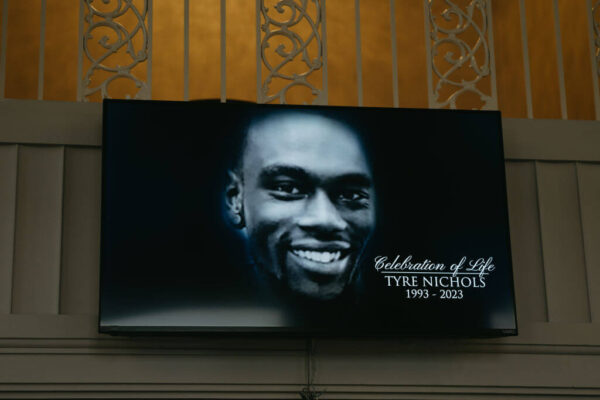Five additional Memphis Police officers violated department policy — but were not fired — following the arrest of Tyre Nichols, a Black man who died three days after a severe beating at the hands of Memphis officers last year, according to hundreds of pages of documents recently released by the city.
Nichols died on Jan. 10, 2023, after he was beaten, pepper sprayed and shocked by Memphis Police Officers Demetrius Haley, Tadarrius Bean, Justin Smith, Emmitt Martin III and Desmond Mills — all of whom were Black — on Jan. 7. Nichols, a 29-year-old FedEx worker, allegedly was pulled over for reckless driving.
Included in the latest documents from the city of Memphis, which last month released 21 additional hours of footage from the night of the beating, are personnel files for terminated Memphis police and fire department employees, a witness statement, emails exchanged between police and city officials and internal police investigation files, The Associated Press reported.

The release of the additional documents served as a “commitment to transparency” from the city’s administration, Memphis Mayor Paul Young said in a statement.
“We understand the importance of releasing these documents to the public,” Young said.
A coalition of media organizations pressed the city to release more information, citing the First Amendment, which led to the release of the additional hours of video footage and audio from the city on Jan. 30, according to the AP.
The new documents show five additional officers received internal affairs reprimands that included body camera violations and not completing or inaccurately completing documentation. It also shows that the officers who were arrested — Haley, Bean, Martin, Mills, and Justin Smith — were tested for drugs, and their boots were collected for evidence.
The sixth officer fired in the Nichols case but who did not face criminal charges, Preston Hemphill, also had to be urine tested for drugs, the document showed.
An internal investigative report from shortly before midnight on Jan. 7 showed Nichols was hospitalized on a ventilator in the intensive care unit “and had a bump on his head.” He was reportedly in critical condition at that time, according to Lt. Dewayne Smith, as noted in the report.
Smith was the supervisor on the scene who was allowed to retire before he was fired.
Smith told the mother at her home that Nichols was intoxicated and asked her if he was known to take any narcotics, the document showed. Wells said he occasionally smoked “a little” marijuana, to which Smith responded, “Well nah, he on something else than marijuana,” according to the document.
He told the mother during the conversation that Nichols was with paramedics and was going to jail on a DUI charge.
However, a statement from Hemphill in the report — “Ain’t nothing in the car, so I don’t know what he was trying to hide or just on something” — seemed to contradict court filings from the officers’ defense attorneys alleging that there were hallucinogenic substances along with stolen credit and debit cards in Nichols’ car, the Commercial Appeal reported.
A witness who told investigators about what she saw the night of Nichols’ beating said she saw the police activity outside of her home on a street where “we never really have anything happen,” according to the report.
The witness said she saw a person lying on the ground, and five minutes later, paramedics arrived.
“Dude wasn’t budging,” the witness said of Nichols. “I was like, ‘Oh my God, I think he’s dead.’”
It took three or four officers to sit up Nichols, who the witness said was wearing short handcuffs, and lean him on the back of the car, according to the witness’s account.
“The EMT guy lifts his hand, it falls … it fell real hard, and I said, ‘Oh my God, they just raised his arm and it fell,’” the witness said. “That’s when I’m like, ‘man, something’s wrong with dude.’”
The Commercial Appeal reported another finding in the documents that conflicted with what’s shown on the video footage of Nichols during the altercation with police.
“After struggling with the suspect, Detective T. Bean utilized soft hands techniques with a closed hand, which was not effective. The suspect continued to resist officers, in which additional officers made the scene to place the suspect into custody,” according to a response to resistance form, which officers have to fill out anytime there’s a use of force during an arrest.
However, the body camera footage shows something different from what is reflected in the statement. The videos show officers repeatedly punching and kicking the man, which are examples of hard-hand techniques used by officers, the newspaper reported.


